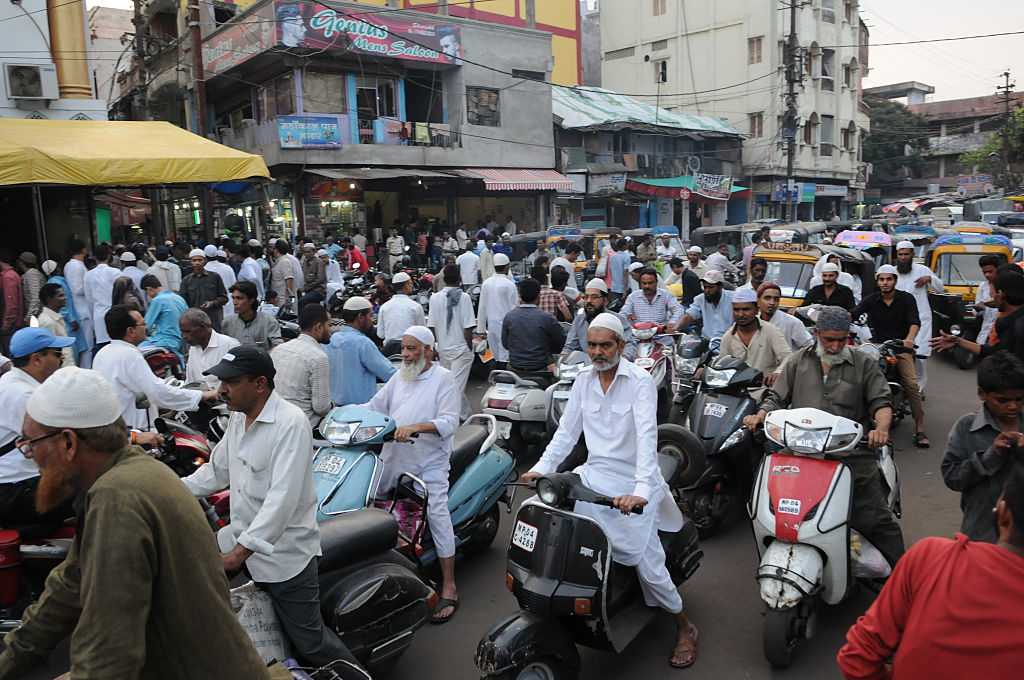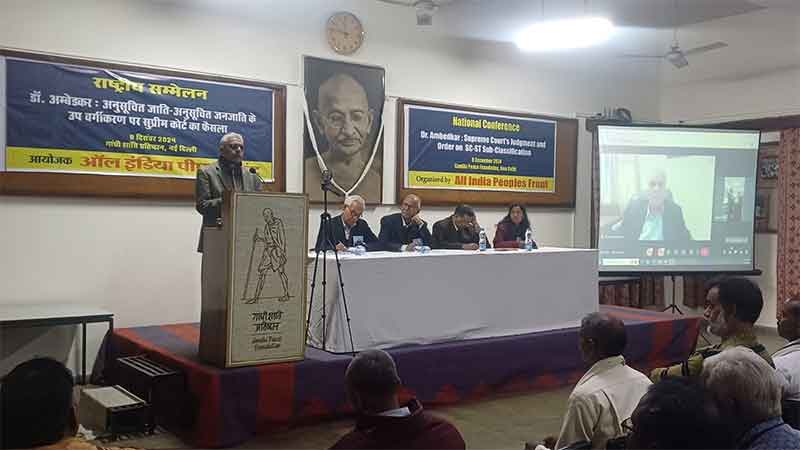
The Supreme Court judgement on 1st August 2024 by 7 judge constitution bench in a 6:1 majority judgement on state of Punjab v. Davindra Singh allowed states for sub-classification of scheduled castes for purpose of reservation in jobs and education and also introduction of a creamy layer criteria to SC and ST reservation different from OBC.The matter of applicability of creamy layer was denied to SC,ST in Indra Swahney vs Union of India(1992) case but now both sub categorization and creamy layer is applicable to all reserve categories except EWS.
This judgement has changed the E.V.Chinnaiah v. state of AP (2004)’s 5 Judge bench decision which was restricting the states to sub-categories SC list, notified by president under article 341, for the purpose of preferential treatment to relatively backward castes within SC. The judgement led by the Chief Justice(J) while upholding the state power to do classification imposed conditions before the state to generate quantifiable data to justify such division based on inadequate representation. This process is not above judicial scrutiny. J. Gavai wrote that sub- categorization is to bring more social and economic democracy. J. Bela Trivedi takes an opposite view over the majority judgement, referring to the limitation of legislative power of the state.
While sub-categorization gets a mixed response among Dalit groups and political parties,the introduction of creamy layer is being opposed by almost all. Though primarily the petition was relating to SC sub -categorization but unnecessarily the judgement has included ST who constitute almost half of SC population of the country and their issues are different as they are culturally-religiously not part of the caste system.The most vulnerable tribes such as PVTG are identified and supplemented with special projects along with a host of protective legislation such as religion neutral status, exclusive land and forest rights,PESA ,FRA and 5th and 6th scheduled provisions.
SCs continue as part of hierarchical caste society and the very basis of their identification started with untouchability and caste occupations. The reality is castes identified within SC are having very little commonality and also practice hierarchy among them though vary in degree.The castes traditionally engaged in leather work,shoe makers ,drummers , scavengers and Safai karamcharis and communities engaged in socially inferior occupations are seen as lowest in caste hierarchy.The anti-caste movement very seldom discuss the issues of social assimilation among Dalits in line of annihilation of caste. There are more than 1100 sub castes identified as SC in 28 states.The SC status is state specific, so also their issues based on occupations and social status. It is also linked to religion and local political dynamics. The Indian statutory commission report 1930 reported that “Bengal ,Bihar and Odisha and the united provinces, although there were large numbers belonging to untouchable caste ,in general they do not seem to suffer so universally or so severely as in the South”.
The issue of sub-categorization movement started some time in 1990 in AP ,Katakana and TN by the Madigas who are claiming themselves as less represented among SCs in getting reservation benefits that are not in proportion to their counterparts such as Mala and Adi Andhra. Similarly the Valmikis ,Majbis of Punjab and Arunthathiyars and Chakliars of TN and Musahar,Dom in Bihar, Mangs of Maharashtra are subscribe the same argument.The Mala, Holeya ,Paraiyar, Pallar,Chamar, Ravidasia,Paswan and Mahar etc are comparatively taken little higher benefits than others and have come out of caste based occupations,get educated, and getting little visibility in socio-eco and socio-political life among Dalit social groups . Odisha has witnessed a untouchable Dalit reservation movement against “Kaibarta,Keuta and Dhibar” castes who though not untouchable are entered into SC list and have taken a lion share in reserve seats in job ,education and political posts. The Bengali refuses get a SC status in Odisha and have been rehabilitated with land and other benefits, get visible in local business and politics while the locals there suffer the most.The untouchable communities ,Safai karamcharis ,Mehentara caste have been deprived of a fire share.
The sub -categorisation move started with The AP SCs (Rationalization of Reservation)Act 2000 which was upheld by the AP High Court but it was declared unconstitutional and then The Punjab scheduled caste and backward classes (Reservation in services)Act 2006, was unimplemented by the respective state governments has been a matter of concern for last twenty years. There were also a number of state commissions recommended for sub -categorization in different times such as J. P. Ramachandra Raju commission,AP, J. Gurnam singh commission,Haryana, J. RN Prasad committee, Punjab, Lahuji Salve Commission in Maharashtra,2003, J. A J Sadashiva Commission ,Karnatak, Mahadalit commission in Bihar, J. Janarthanam Committee in TN ,2008. The state of Bihar divided the Dalits into Dalit and Mahadalit in 2007 and Haryana created a group called deprived SCs in 2020.
The sub-categorization has been encouraged by BJP when PM Narendra Modi met Krishana Madiga ,leader of Madiga Reservation Porata Samithi in last election meeting and promised him for a change.The support of government for sub categorisation was well represented by both Attorney General and Solicitor General. Dr. PL Punia while in NCSC had made a recommendation for sub-categorization in 2010. The J. Usha Mehera commission setup by GoI on request of AP govt had opinion in its report in favour of sub-categorization in 2008. The then government of Odisha including other 14 states disagreed for sub-categorization.
As a matter of equality of opportunities, to promote substantive equality, preferential treatment is required for the most disadvantaged section to ensure their adequate representation , to that effect sub-categorisation is a reality for states aspiring for it.
Number of studies have found that creamyy layer is not an issue among SC,ST. Because economic development of few does not kick off social discrimination historically faced by Dalits and Adivasies. The study by DICCI and MSJE reported that there is a very insignificant number of affluent among SCs and STs. Even though all the reserve seats will be filled up ,it will not cover one percent of the their population. The NSO 77th survey 2019 on debt and investment shows huge asset inequality among social groups ,and found SCs are on a lower ladder.
It is expected that the next move of the BJP government is making reservation Hindu centric.The conversion to non-Hindu religion has not impacted much on the social status of untouchables.Dr. Ambedkar preferred to leave Hinduism and embraced Buddhism with his lakhs of followers who were not in SC but included in 1990 .
The Dalit christian and Dalit Muslims have been demanding SC status. J. Sachar and J. Ranganatha Mishra commission’s recommendations still pending and currently, J. K.G. The Balakrishnan Commission is investigating the issue . BJP has been opposing the religion neutral character of SC and ST to oppose the inclusion of non-Hindus specially Muslim and Christians though already Sikh and Budhists have got an entry.
Subscribe to Our Newsletter
Get the latest CounterCurrents updates delivered straight to your inbox.
While opposing entry of Dalit Christians it is being argued that though they face social discrimination but they are relatively more well off than Dalit Hindus may be due to access to English education and exposure to larger Christian society.
While globalization and privatization takes up issues of jobs and education beyond reservation. SC,ST have to find solutions to over come reservation centric issues and must more engage in building socialistic and democratic aspirations of the community towards an egalitarian society and must collectively strive to fight issues such as abolition of caste and for universal access to all kinds of public opportunities including land, education, budget ,reservation in private sector to achieve larger holistic transformation for the whole community and nation at large.
Manas Jena is an activist and columnist based in Bhubaneswar, Odisha,[email protected]














































